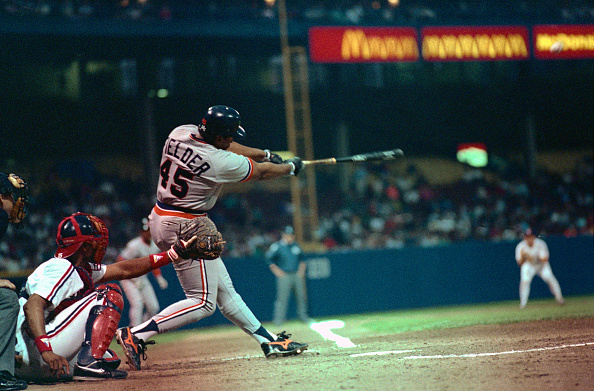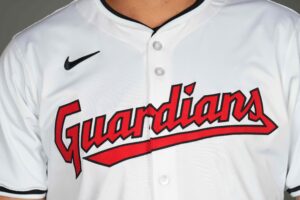There is misrepresentation in Mudville tonight. It all started with a baseball card. You remember those things. Piece of cardboard roughly measuring 2 1/2 by 3 1/2 inches with a ballplayer’s mug on the front. Memory jogged? Yes? Great.
The card that blew up the spot and got the ball rolling on the deep dive into this Watergateesque scandal is a 1988 Topps Cecil Fielder. It’s a lovely-looking card, simple, a white border encases a more minor red border, with “Blue Jays” written at the top in a font that is both feminine and masculine while evoking a child-like comfort. The name banner, tucked at an angle on the right side of the card, is an eye-catching yellow that doesn’t allow the beholder to ignore the ballplayer’s name written in tar pit black that sucks one in like a tar-drenched struggling woolly mammoth during the Pleistocene.
The photo is of a young Fielder, bat resting on his right shoulder, a single Franklin batting glove on his left hand. A glossy layer of sweat covers Fielder’s face, surely a product of springtime Florida. He has the smile of someone who is tired of smiling. It is your standard bat-on-shoulder baseball card pose.
Japangate
A quick flip of the card shows that it is early on in Fielder’s career and he is not yet an everyday player. The Toronto Blue Jays called him up in July of 1985. Following his promotion, he remained a part-time first and third baseman behind Willie Upshaw and the crime dog, Fred McGriff. Unsatisfied with his part-timer role, Fielder decided, after a disappointing 1988 season, to look elsewhere for employment.
1989
He found gainful employment across the Pacific Ocean with the Hanshin Tigers of the Nippon Professional Baseball league in Japan. Fielder signed with the Tigers for significantly more money and the opportunity to be an everyday player. So, for the 1989 season Fielder played in Japan. Let’s make that very clear. He did not play in Major League Baseball in 1989. His first game in Japan was on April 8, 1989, and his final game was on September 14, 1989.
In the process of his time spent in Japan, there were eight Japanese Cecil Fielder baseball cards produced; six in the 1989 Calbee set, one in the Lotte set, and one in the Hanshin Tigers team set. That makes sense, right? Because he played in Japan in 1989. So it is only logical that there would be Japanese baseball cards produced.
Deception
But there is a problem here. The top U.S. baseball card brands didn’t seem to get the memo that Fielder wasn’t going to be playing stateside. Topps, Donruss, Score, Fleer, and Upper Deck each produced Fielder cards for the 1989 season.
Collusion
That’s right it seems that these five companies colluded in the Cecil Fielder Baseball Card Conspiracy.
Cecil Fielder Baseball Card Conspiracy
And what was the conspiracy? To trick the American public into thinking that Cecil Fielder was actually playing for the Blue Jays in 1989.
Resolution
Now, 33 years later the case has been solved, the conspiracy exposed, and the guilty parties accused. Fielder returned to MLB in 1990 with the Detroit Tigers. That season he hit 51 home runs and drove in 132 runs, becoming the 11th player in Major League history to hit 50 or more home runs in a season. Also in 1990, there were seven Fielder cards produced; Topps produced two, Bowman produced two, Upper Deck produced one, and Score produced one, along with one in a U.S. playing card set. Suspiciously, Donruss and Fleer didn’t produce a 1990 Fielder card. And there is a rumor that Lotte, a Japanese card company, did produce a 1990 Fielder card even though he was playing back in the U.S. Hmm, maybe the Cecil Fielder Baseball Card Conspiracy continues…
Main Photo:
Players Mentioned:
Willie Upshaw, Fred McGriff, Cecil Fielder






